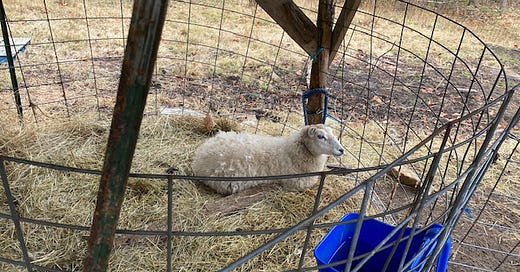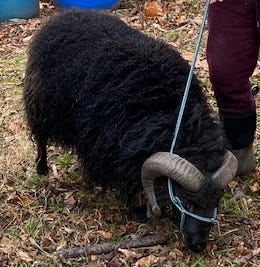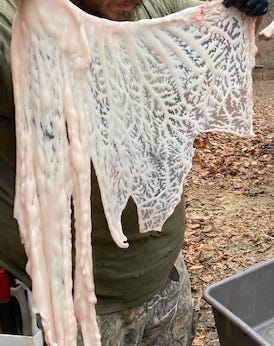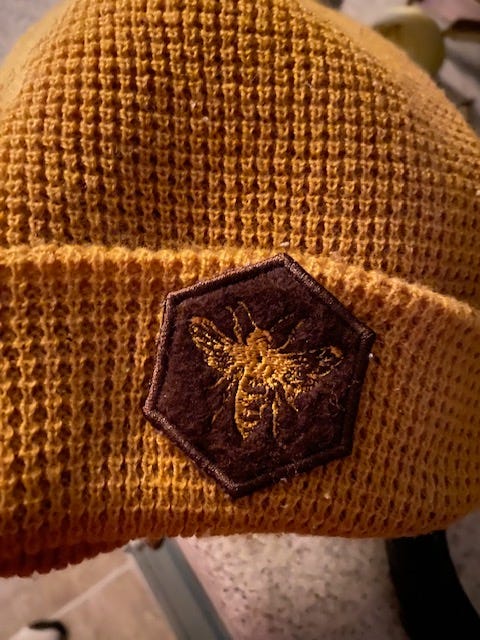7 surprises at a home butchering class
Over the weekend I attended a home butchery workshop near Asheville, North Carolina. Here’s what surprised me.
Being one of the pillars of this blog, nutrient-dense food generally centers around getting as close to the source as possible. While I’m interested in growing, raising, and sourcing nourishing food, I’m also deeply passionate about humane animal husbandry and ecological methods that simultaneously help feed the land. To have a better understanding of how one would butcher their own animals on the home scale, I signed up for a home butchery class organized by the Firefly Gathering.
Aside from being a 501(c)(3) non-profit, the Firefly Gathering is an annual event in Western North Carolina dedicated to educating others with skills for a more sustainable future. In addition to their tentpole event, they host workshops, galas, and youth programs throughout the year.
When I checked my calendar to see if I was free for their home butchery workshop, I signed up right away since it was a rare weekend with no obligations. (I took advantage of solo, puppy-free travel to visit several shops in downtown Asheville. I also had an amazing dinner in Weaverville at the Glass Onion and highly recommend it. They make everything in house, down to the ice cream. I had a butternut squash-herb gnocchi with rabbit, and an 11-layer honey spice cake for dessert. Check them out if you’re in the area.)
About a half dozen people attended the workshop, which was held on a 100-acre farm north of Asheville in Mars Hill, the same town where I attend the annual Organic Growers School Conference. When chatting with one of the students at the class, he shared an interesting metaphor. I told him about my Idaho Pasture Pigs and that they have a date scheduled in February at an Animal Welfare Approved processor. He likened my learning how to butcher to a changing a car’s oil. Yeah, you might know how to change your own oil, but you still take it somewhere for someone else to do it. My attendance is about having the knowledge and the option to choose.
The all-day workshop started along a dirt driveway between two pastures leading up to a wooded hill. As the driveway lifted between the pastures, a pig pen, goat paddock, and sheep paddock intersected beside a tin roof lean-to packed with fencing materials, straw, water containers, tools, and one end sectioned off with a white St. Croix ewe. A small, metal livestock trailer was parked a few feet away, and thuds sounded every few minutes. A subtle way for a Shetland ram to tell us of his presence. (I’ll explain these two sheep in my list of surprises.)
The instructor, Grant Adkisson, explained the differences of processing pigs, sheep, and goats. He went into careful detail about the beginning of this process, which requires an end. We were all present for what I’ll call the time of honor. We spent the rest of the day up a hill where a butcher block, tables, and tools were arranged. The day filled me with more than I expected. It was rewarding, emotionally taxing, inspiring, and surprising. Here are a few of the surprises.
A hog turned into 2 sheep | The original workshop was supposed to be butchering a hog. With what I know of this process, it’s challenging. It’s something that I know I couldn’t do alone and that I wouldn’t attempt to do without participating and observing the process myself. The morning of the workshop I received an update that due to the weather, which was just a little too warm, the hog would be replaced with 2 sheep. The ewe that I mentioned earlier was Adkisson’s. The ram was trailered in by an attendee. Since I would like to raise sheep at some point, the workshop still felt valuable and I’m glad I attended.
DIY felt feasible | I know I could never butcher a pig by myself, but seeing the sheep processed made that feel attainable to me. If the opportunity comes up some day, I would feel comfortable (with a good mix of apprehension) managing a sheep on my own. The ewe was approximately 60 lbs., which I feel confident managing. (Not any time soon since I have a back injury.)
Veterinary regulations aren’t evolving in favor of small farms | When it comes to commerce and processing, it’s no surprise to me that small farms consistently face challenges. However, I was surprised that regulatory challenges have grown related to veterinary and animal care. A big change happened 6 months ago when animal antibiotics were removed from over-the-counter sales. According to FARM AND DAIRY, farmers are “required to go through a veterinarian to get antibiotics they used to be able to buy freely at their local farm supplies store. It’s part of an effort by the U.S. Food and Drug Administration to combat antibiotic resistance.” Finding large-animal veterinarians is challenging, and even more challenging in rural areas. The time lost waiting for a vet to come could jeopardize an animal’s life and hinder their comfort. The new regulation also creates tremendous fees for livestock owners who now need to pay a vet, potentially a travel fee, or transport the animal to a vet, on top of the cost of medicine.
I was the only woman | No other women signed up for the workshop!
Pre-beginners attended | I thought that this type of workshop would attract people who already had livestock, but about half the folks hadn’t raised animals before. Some people attended because they want to have a better understanding of where their food comes from and to get closer to the source. I dub these folks “pre-beginners” because they haven’t started yet.
Caul fat | I had never heard of caul fat before. It’s a layer of fat that protects the internal organs. Adkisson described it as “the tree of life.” The lace-like veil of fat looked like a work of art. Adkisson said he uses it to make cassoulet, and I read that you can also use it for sausages and pate.
People are generous | Later in the day I chatted with the person who organized the workshop. I loved their hat, which had a bee on it. When I told them I was a beekeeper, they gave me the hat right off their head! I love the community that blooms when like-minded folks come together.
If you’re interested in learning about other events that the Firefly Gathering organizes, check out their Perennial Workshops. Some upcoming events include beeswax candle making, spoon carving, and foraging.







